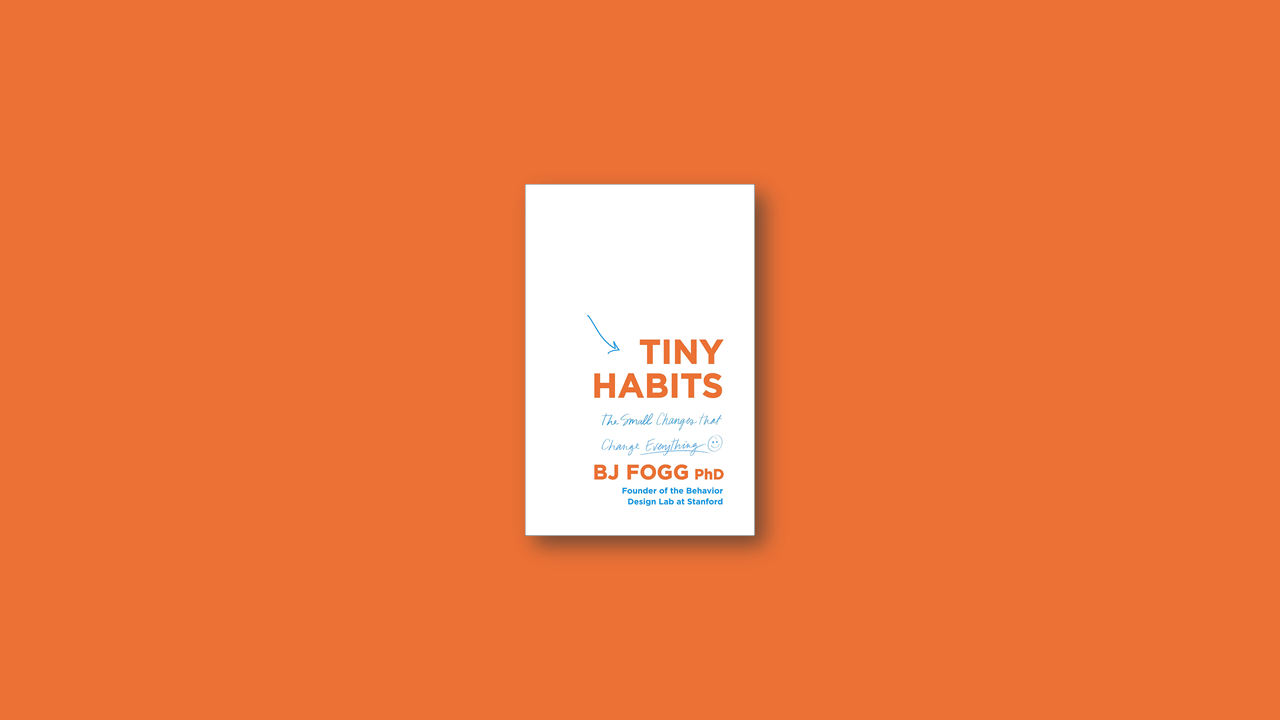There’s an anatomy to tiny habits. It has 3 parts:
- Anchor moment – existing routine (e.g. phone ringing, brushing teeth)
- Tiny behavior – new tiny behavior (e.g. push up)
- Instant celebration – positive emotion (e.g. I did a good job)
Together you can think of it as ABC (Anchor, Behavior, Celebration).
Behavior happens when three elements of MAP comes together at the same time.
B = MAP
Behavior = Motivation (desire), Ability (capacity), Prompt (cue)
Let’s plug your phone scrolling behavior. It’s so easy to stay in the bed and scroll your phone (high motivation and high ability). It’s also reliable the phone will feed you with constant stream of notifications (high prompt). It makes sense why capable persons have a hard time kicking this scrolling habit.
Troubleshooting behavior starts with prompt.
Suppose your team keeps arriving late. Many managers will get upset and start imposing penalties. All of those are attempts to motivate people, and all of those are mistakes. You don’t start with motivation when troubleshooting. Instead:
- Check if there’s a prompt to do the behavior (e.g. meeting reminder)
- See if the person can do the behavior
- See if the person is motivated to do the behavior
No drama, no dirty looks, just design a good prompt. So, remember P à A à M
Motivation is like a party animal friend.
Good for a night out, but not someone you would rely on to pick you up from the airport.
Many products and services will succeed by helping customers create action prompts.
Here’s how it might work. Imagine your organization needs your patients to measure their blood pressures once a day. In the past, you relied on person prompts (having to remind the patients). to do their jobs). And you found it quite unreliable, so you started using context prompts (you send text messages, pop up reminders, or you have nurses call patients at home). But this prompt works less well over time because your patients are bombarded with competing prompt. Instead of ramping up on context prompts, you turn to action prompts.
To discover good action prompt, start with a bit of research.
Reach out to your 200 best patients, those people who reliable measure and report their blood pressures. Ask them: At what point in your daily routine, do you typically measure blood pressure? Analyze their answers and look for trends. As you try to increase adherence, explain many successful patients do this daily habit at one of these three times, and ask Which one of these three times would work for you?
Emotions create habits, not repetitions.
Some of today popular habit bloggers still talk about repetition or frequency as the key. Still, people can build habits very quickly, often in just a few days, if people have a strong positive emotion connected to the behavior. In fact, some habits tend to get wired in immediately. You do it once and you crave it an instant habit. IF you give your teenage daughter a smartphone, her emotional response to using the device will wire the habit immediately, no need repetition.
Find your natural celebration.
A natural and deeply felt celebration will give you super powers for creating habits. Use that natural reaction to feel shine and wire in your new habits. Imagine you make it to the process, all the way to the final interview of your dream job. The hiring manager said we’ll send an email with our decision. The next morning the manager email is waiting for you. You open it and this is the first word you read “Congratulations”. What do you do at that moment? What’s your reaction?
Remember you change best by feeling good not by feeling bad.
Celebration is the bridge from tiny habits to big changes. Celebration will be one day be ranked alongside gratitude and mindfulness as daily practices that contribute most to our overall happiness and well-being.
Flexibility is part of the scale.
If you’re sick, tired or not just in the mood, be willing to scale back to tiny. You can always raise the bar when you want to do more. If you push too hard, make sure you celebrate extra hard.
Design super fridge for weight loss.
Prepare healthy foods in containers. When you want a snack at middle of the night, just open super fridge. All good food. No deprivation. No need to keep willpower.
Don’t break a bad habit. Untangle it.
You cannot get rid of an unwanted habit by applying force one time. Instead picture a different analogy. Picture a tangled rope that’s full of knots. That’s how you should think about stressing out, too much screen time and procrastinating.
You must untangle the rope step by step.
And you don’t focus on the hardest part first. Because the toughest tangle is deep inside the knot. You must approach it systematically and find the easiest knot to untangle.
Dolphins, Turtles, Crabs and Clams
- Dolphins have both the ability and motivation to act.
- Turtles have the motivation, but not the ability to act.
- Crabs have the ability, but not the motivation to act.
- Clams don’t have both the ability and motivation to act.
What should you focus on? Besides the dolphins, first focus on the turtles. Find ways to make the behavior easier to do. Forget about the crabs and clams for now. They’re unlikely to join and you shouldn’t waste time on them.

